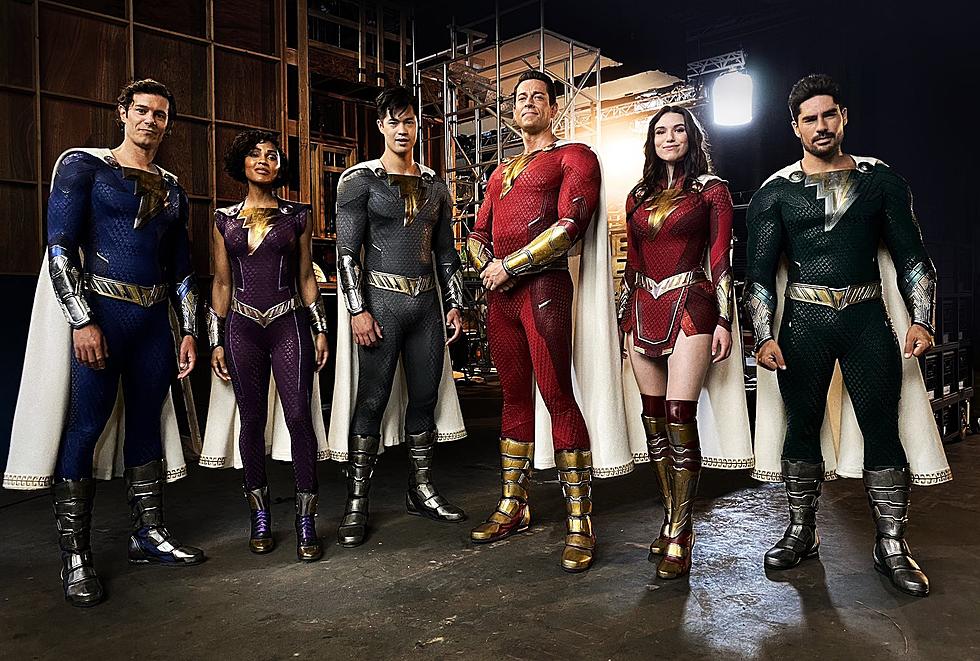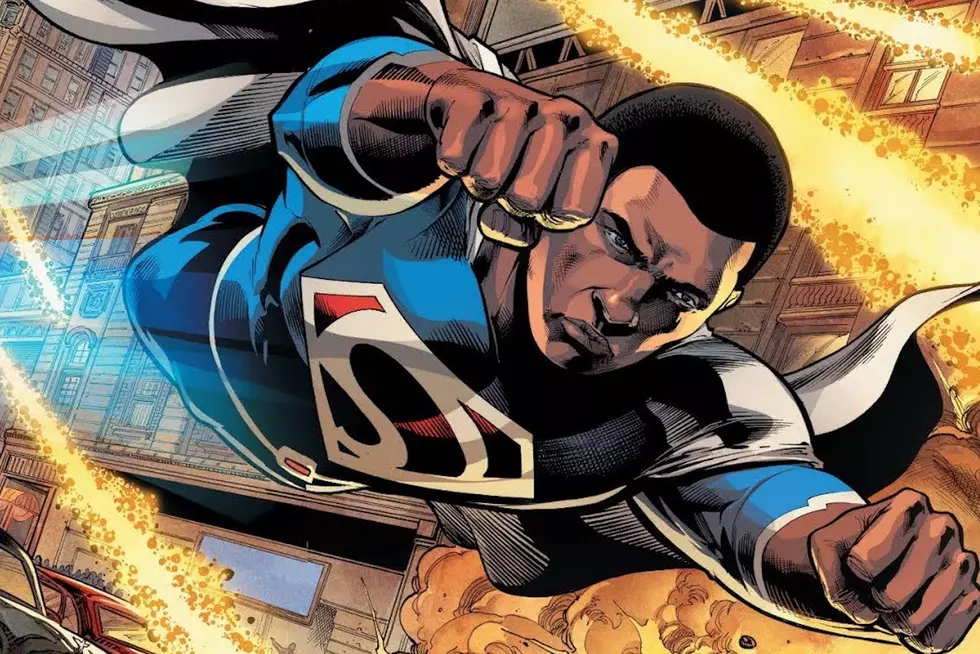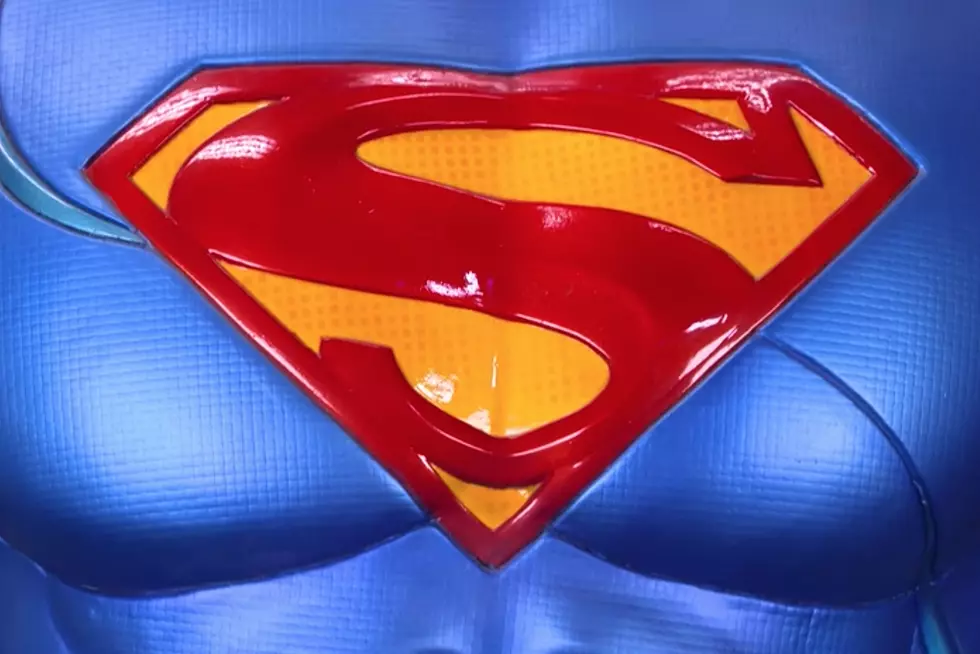
Ask Chris #245: Superman vs. Shazam
Q: You've mentioned it a few times now; what makes the idea of Captain Marvel an even better idea than Superman to you? -- @dispenserotruth
A: The thing about Superman and Captain Marvel --- or Shazam, as the kids are calling him these days --- is that you can't really talk about one without talking about the other. I mean, you can, but the histories of those two characters and how they evolved over the years are so tied up together, both on and off the page, that they couldn't really have happened the way they did about without each other.
And right there at the start, Bill Parker, C.C. Beck and, later, Otto Binder took the blueprint that Jerry Siegel and Joe Shuster laid down for Superman and figured out how to make it better. Which, when you get right down to it, ended up being how we lost Captain Marvel and got a better version of Superman in the process.
Don't get me wrong: Superman wasn't a bad idea to begin with. If there's one thing that everybody reading superhero comics should be able to agree on, it's that Superman is, in fact, a pretty good idea. So good, in fact, that he ended up launching an entirely new genre composed of hundreds of characters that, if you're not feeling especially charitable, you could pretty accurately refer to as knock-offs.
It's one of those facts that's so obvious that we all end up taking it for granted, but it can never really be overstated how massive that original superhero boom of the Golden Age was, and how much of it was based entirely on people trying to replicate the massive amount of money that National was raking in thanks to the popularity of Action Comics.
Before April of 1938, the superhero genre didn't exist, and five years later, there were hundreds of superhero stories coming out every month, with virtually all of them taking their cues, directly or indirectly, from Superman. You see it in everything from the costumes to the powers. Stardust the Super Wizard wouldn't have the ability to do something as weird as shrinking a man's body into this head and throw it into space to be digested by a man-eating torso if people weren't trying to think of something bigger and weirder than a news reporter who could jump over a skyscraper and swat bullets out of the air like flies, you know?
That's actually kind of the fun of Golden Age comics. Read enough of them, and you can see people trying to figure out what the rules of the genre are as they're going along, trying to refine a formula when they're not even sure what that formula is yet.
More than anything else, it's that idea of refinement that defines those Golden Age characters. Even Superman himself borrowed a whole lot from his predecessors in the pulps (like, say, Clark Savage Jr. and his Fortress of Solitude) before filtering them into something new. It doesn't even have to be picking up influences from outside, either. Take Batman, for instance. He starts off as a pretty shameless take on the Shadow, but just look at how much he changes over the course of that first year. In one year, his costume changes, he gets a new sidekick and starts to move away from the mold of a pulp vigilante and closer to this brand-new idea called the superhero.
It was happening in the pages of Action Comics and Superman, too, in almost the exact same way, but the creators who weren't working on Superman had one key advantage over the ones who were: They could read Superman. It's another one of those obvious truths, but trying to figure something out while you're doing it is a whole lot harder than watching someone else do it and then trying to reverse-engineer it for yourself. It's one of the reasons that so many of the elements that would come to be core pieces of Superman's ongoing story over the next 70 years got their start as part of the radio show, like Jimmy Olsen and Kryptonite.
And it's why Parker, Beck and Binder were able to build on that foundation to create Captain Marvel.
And make no mistake, that's exactly what they were doing. The entire Golden Age was full of characters who were riffing on Superman in one way or another, but Billy Batson was his first direct descendant, and the folks behind those comics weren't exactly keen on hiding it, either. Just look at the covers of their first appearances: Action #1 has Superman hoisting a car over his head in a mind-boggling feat of strength, Whiz #2 --- which, despite the numbering, was the comic's first issue --- has Captain Marvel taking it one step further and throwing it straight into a brick wall.
As to how the characters worked, the refinements that were made for Captain Marvel are pretty obvious. The costume alone is clearly someone looking at what Superman wears and figuring out how to make that look even better, but it goes a little deeper than that surface. Superman is undoubtedly an aspirational figure, a champion of the oppressed, a person given unbelievable power who decided to use it exclusively to help others. And on top of that, he puts on a tie and a pair of glasses and he could be any one of us. He's a Kryptonian in strength, but at heart, he's most definitely a human being.
Captain Marvel, on the other hand, is aspirational in a much more literal way. Same powers, same dedication to doing good --- heck, Billy Batson's even got the same job as Clark Kent! --- but in his heart, he's a kid. At a time when Superman was leading a massive boom in this new popular medium, when Action Comics had circulation in the millions and kids were tying towels around their neck and pretending to be Superman themselves, Captain Marvel gave them a hero who was one step closer to who they really were. All they needed was a magic word, which is a much more pleasant fantasy than an exploding home planet.
It's the same principle behind Robin, to the point where I wouldn't doubt that Billy and his signature red-and-yellow shirt had more than a little influence on Bill Finger and Jerry Robinson when they introduced him. If you're a kid who loves Batman, then it's pretty easy to identify with a kid who loves Batman, and even though they both have that element of being orphaned, I honestly don't think there's any better outcome of your parents dying than getting a new dad and it's Batman. But I digress.
That simple idea of a story where a kid can turn into Superman is brilliant, and brilliantly executed. It's even more of a wish-fulfillment story than Superman's role as a the champion of the common man, and it works, because it's directed at kids. There's a universal feeling among children that's so frustrated with being children. You're not the one making the rules, and you have this idea that when you're grown up, you'll be the one in charge with the power to make decisions. Captain Marvel is based exactly on that idea, literally turning a kid into not just a grownup, but a kid's idea of what it means to be a grownup: All-powerful and responsible for taking care of everyone.
When you're a kid --- especially when you're a kid growing up in the depression, I imagine --- it's easy to feel like the everything's against you. Captain Marvel showed a good kid who had every tough break that he possibly could, but who found enough power to take on the entire world.
That's one of the greatest comic book covers of all time, by the way.
Which brings us to one of the other interesting tweaks about Captain Marvel: building it around magic, rather than science. Siegel and Shuster introduced Superman with a page that was all about how scientifically possible his powers were, talking about the amazing leaping ability of the grasshopper and the proportionate strength of an ant --- like that idea will ever get anywhere --- which I think was meant to ground their story in a more realistic brand of science fiction. With Captain Marvel, though, science is out the window from the first second that the magic train shows up. It's a particularly nebulous kind of magic, too --- the strength, speed and stamina bits of the acronym are pretty easy, but "the power of Zeus" is a pretty broad concept.
I don't know that I'd necessarily call this "better," but it's worth noting that they also went full-on cartoony with it, in the biggest and most fantastic way possible. They gave him adventures that suited how unbelievably powerful he was, rather than attempting to reflect the world around them.
Superman, in his original incarnation, could withstand the power of an exploding artillery shell and primarily fought gangsters and slum lords. Captain Marvel once survived the explosion of "a billion tons of dynamite" and fought a sneering mad scientist who was also the King of Venus --- and that was one of his less bizarre villains. And it was also a book that pretty frequently broke the fourth wall and acknowledged that it was, in fact, a comic book --- there's that story where Captain Marvel Jr. tirelessly pursues a villain, only to have him escape, and then assures readers that he'll keep on following him into the pages of Master Comics.
While the world was reacting to Superman, though, Superman and his creators were also reacting to the world around them. Superman's status as the original superhero and the rapid evolution of the genre meant dramatic change, and for Superman, that meant a pretty steady increase in the bigger and wilder exploits. At the same time, National was suing Fawcett, ending Captain Marvel's comics at the height of their popularity.
The thing is, all this led to yet another example of the superhero genre being refined. After the Shazam comics ended, National would eventually hire the primary writer of Captain Marvel's adventures, Otto Binder, who would end up essentially being the definitive writer for the Superman of the Silver Age --- a Superman whose adventures were a whole lot more like Captain Marvel's than they had been in the Golden Age.
Binder introduced virtually all of the concepts that defined that era, and a lot of it was riffing off stuff that he'd already done. It's hard not to draw a direct line from Mary Marvel to Supergirl, and as my pal Andrew Weiss pointed out long before I realized it, Mr. Tawny and Jimmy Olsen aren't just filling the same role in a lot of their stories, they're literally wearing the same clothes.
And that ended up being the problem with Captain Marvel when he made his return in the modern age. He's got that great core concept and that costume is one of the all-time greats, but Superman ended up evolving to fill his role, and did so for a whole lot longer than Captain Marvel's initial run. When Captain Marvel Adventures ended and Binder started writing Superman stories, the two characters were effectively merged into one, which means that it's a whole lot harder to find a way to fit Shazam into a shared universe. It's one of the reasons that Shazam stories always tend to be isolated from the rest of the line, even in something like the '90s Power of Shazam! series, which was definitely set right smack in the center of the DC Universe.
And, I suspect, that's why the modern era of DC has spent the last fifteen years being way more interested in Black Adam than Captain Marvel. On paper, at least, he's got all the inherent elements that you get from Shazam, but he's eeeeeeevil, or possibly just misunderstood, which means that they don't have to worry about any of that stuff about wish fulfillment, relating to kids, or over-the-top bizarre adventures. He can just show up, shove somebody's eyes through the back of their head, and call it a day.
It's like I've said before: You can be a great character, you can have great stories, you can be loved by every creator, but unless your name is Batman, you're never going to be more important to DC Comics than Superman, and even that's up for a pretty strong debate. At the end of the day, though, that core idea of Captain Marvel is still every bit as brilliant as it was in 1940 --- an idea that was so good that they ended up turning Superman into it.
Ask Chris art by Erica Henderson. If you’ve got a question you’d like to see Chris tackle in a future column, just send it to @theisb on Twitter with the hashtag #AskChris.
Check Out Some Strange and Surprising DC Comics Facts
More From ComicsAlliance









